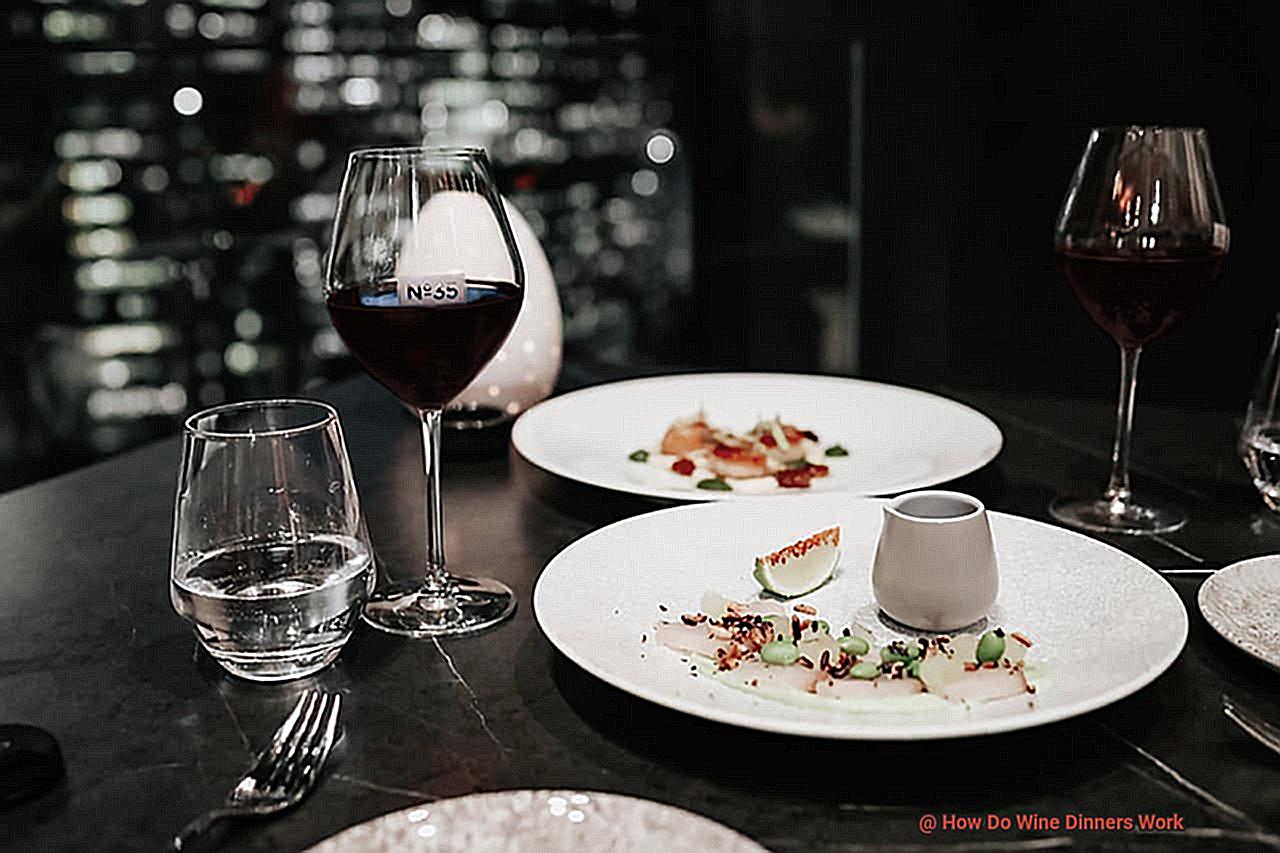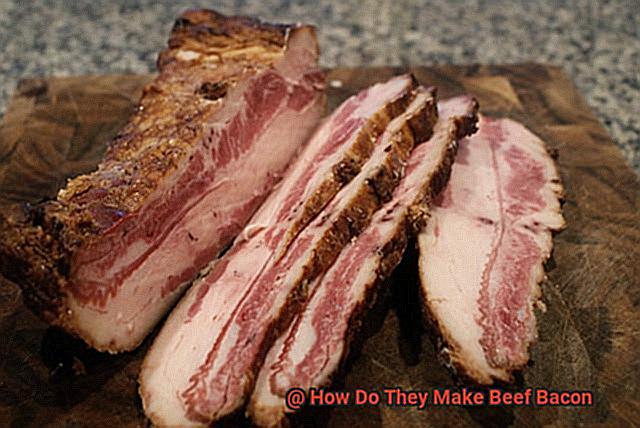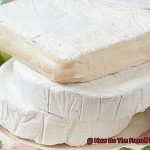Get ready to embark on a culinary adventure like no other. Picture this: a symphony of flavors dancing on your palate, each sip and bite complementing the other in perfect harmony. Welcome to the world of wine dinners, where gastronomy meets viticulture to create an evening of pure indulgence.
But what exactly are wine dinners and how do they work? In this blog post, we’ll unravel the magic behind these captivating events, revealing their unique nature and offering valuable tips for both attendees and hosts. Whether you’re a food enthusiast or a seasoned wine lover, join us as we delve into the intricacies of wine dinners and discover how they can take your dining experiences to new heights.
Contents
What is a Wine Dinner?
Indulge in the art of pairing with a wine dinner, an extraordinary culinary experience that combines fine dining and the harmonious union of food and wine. This carefully curated event treats guests to a multi-course meal, where each dish is thoughtfully matched with a specific wine. From the meticulous selection of wines to the perfectly crafted menu, a wine dinner is designed to tantalize the taste buds and elevate the dining experience.
The Perfect Pairings:
At a wine dinner, each course is meticulously paired with a particular wine to enhance the flavors of both the food and the drink. This requires an in-depth understanding of different wine characteristics and how they interact with various ingredients and cooking techniques. From light-bodied whites that dance delicately on the palate to robust reds that leave a lasting impression, every wine is carefully chosen to complement and elevate the flavors of its accompanying dish.
Themes and Varieties:
Wine dinners often revolve around specific themes or showcase wines from particular regions or grape varieties. Explore the wines of Tuscany or embark on a vertical tasting of different vintages from an esteemed winery. These themed dinners provide guests with an immersive and educational experience, delving into the nuances of different wines, learning about their origins, and gaining insights into the winemaking process.
The Educational Component:

In addition to indulging in delectable food and wine pairings, wine dinners often include educational components that deepen guests’ appreciation for both. Knowledgeable hosts or sommeliers guide guests through each course, providing insights into the wines being served, sharing interesting anecdotes, and offering tips on how to fully enjoy the pairing experience. These educational elements add an extra layer of enjoyment and engagement to the evening.
A Social Affair:
Beyond the culinary and educational aspects, wine dinners also provide an opportunity for like-minded individuals to come together and enjoy an evening of good company, conversation, and gastronomic delights. Whether it’s forging new friendships or networking with fellow wine enthusiasts, these events foster a sense of community and camaraderie.
Selecting the Theme
Indulge in a world of enchantment where culinary delights dance with exquisite wines, creating an unforgettable symphony of flavors. As you embark on the journey of planning your next wine dinner, selecting the perfect theme becomes the catalyst that propels you into a realm of joy, discovery, and delightful pairings. In this post, we will delve into the art of choosing a theme that will leave your guests spellbound and craving for more.
Guest Preferences:
Unlock the secret desires of your guests by understanding their unique tastes and interests. Are they seasoned wine connoisseurs yearning to expand their knowledge? Or are they adventurous beginners eager to explore uncharted territories? Tailor your theme to match their desires, whether it’s a deep dive into regional wines or an introduction to exotic varietals that ignite their senses.
Seasonal Sensations:
Harness the power of mother nature’s palette by aligning your theme with the magic of each passing season. Transport your guests to sun-soaked vineyards with a summer-themed wine dinner featuring crisp whites and blush-pink rosés. Or embrace the winter wonderland with bold reds that warm their souls and awaken their spirits.
Cuisine-inspired Themes:
Allow the melody of cuisine to guide your wine selection and elevate the dining experience to ethereal heights. An Italian feast demands a symphony of Italian wines that harmonize with robust flavors, while a French-inspired soirée entices with the elegance of Bordeaux or Burgundy wines, transporting guests to the heart of France.
Showcasing Wineries and Winemakers:
Unveil the hidden treasures of wineries and winemakers, weaving a tale of passion and dedication that captivates your guests’ imaginations. Enchant them with the narrative behind each bottle, allowing them to discover the untold stories and sip upon the craftsmanship that brings these wines to life.
Uniqueness is Key:
In a world where wine dinners abound, dare to transcend the ordinary and embrace the extraordinary. Challenge conventions with unconventional pairings that dance across the palate, leaving guests in awe of the unexpected. Unveil rare and limited-edition wines that ignite curiosity and leave an indelible mark on their hearts. Be bold, for it is in uniqueness that true enchantment lies.
Choosing the Wines
Choosing the perfect wines for your next grilling extravaganza is an art form that can take your wine dinner game to the next level. To achieve wine and food harmony, consider the flavors of your dishes and select wines that complement them. A juicy steak calls for a bold and robust red wine, while delicate seafood pairs beautifully with a light and crisp white wine. It’s all about finding that perfect balance.
In addition to flavors, take into account your guests’ preferences. If you know most of them are die-hard red wine lovers, stock up on those beauties. And don’t forget about any dietary restrictions or preferences your guests may have – make sure to include wines that cater to their needs.
To create a cohesive experience, think about the theme of your wine dinner. Are you showcasing the wines of a specific region like Napa Valley? Or highlighting the elegance of Chardonnay? Whatever theme you choose, ensure the wines align with it and transport your guests to a vinous wonderland.
When it comes to quantity, it’s always better to have more than enough. Aim for at least one glass of wine per course, but have extras on hand for those who want seconds (or thirds). Accidents happen – spills, broken glasses – so better safe than sorry.
Lastly, consult with a sommelier or wine expert. These wizards in the wine world can provide invaluable recommendations based on their knowledge and experience. They’ll also ensure your wines are properly stored and served at the perfect temperature. Having a wine genie on your side is like a dream come true.
Crafting the Menu
Crafting the perfect menu for a wine dinner is like creating a work of art. It requires careful consideration and attention to detail to ensure that each dish and wine pairing is perfectly harmonious. Whether you’re hosting a small gathering or a grand event, here are some key points to keep in mind when curating your menu.
- Wine Pairings: The heart and soul of a wine dinner lie in the wine pairings. Take the time to select wines that will complement the flavors of each dish. Consider the characteristics of each wine – its acidity, body, and tannins – and how they will interact with the flavors on your menu. The goal is to create a beautiful balance between the food and wine, enhancing the dining experience.
- Balance: Designing a menu for a wine dinner requires balance. Start with lighter dishes to awaken the palate and gradually progress towards heavier ones. This prevents palate fatigue and allows each dish to shine on its own. Think about the overall progression of flavors throughout the meal, ensuring that each course complements and builds upon the previous one.
- Regional Pairings: One creative approach is to focus on regional pairings. If featuring Italian wines, incorporate Italian-inspired dishes that highlight the flavors and ingredients commonly found in Italian cuisine. This creates a cohesive dining experience that showcases both the wines and the cuisine of a specific region.
- Dietary Restrictions: Consider any dietary restrictions or allergies when planning your menu. Offering vegetarian or gluten-free options ensures that all guests can fully enjoy the experience without compromising their dietary needs. Providing alternatives for guests who may not consume alcohol is also important to cater to a wider range of preferences.
- Collaboration with Chefs: Collaborating with experienced chefs is vital in creating a well-executed menu for a wine dinner. They can provide valuable insights into flavor profiles, cooking techniques, and ingredient combinations that will enhance the overall dining experience. By working closely together, you can ensure that each dish is meticulously prepared to complement the wines being served.
Greeting Guests with a Welcome Drink
Whether you’re hosting a grand event at a winery or an intimate gathering at home, offering a carefully chosen welcome drink can make all the difference. In this blog post, we will delve into the importance of providing a welcome drink at wine dinners and explore how it enhances the overall experience for your guests.
Creating an Inviting Atmosphere:
Imagine stepping into a wine dinner and being greeted with a glass of bubbly champagne or the crispness of a refreshing white wine. The act of offering a welcome drink immediately makes guests feel valued and sets a warm and inviting atmosphere for the evening ahead. It signals that they are in for an extraordinary experience, igniting anticipation and excitement.
Awakening the Palate:
A welcome drink serves as an introduction to the flavors and aromas guests will encounter throughout the evening. By starting with a light and palate-cleansing drink like a Sauvignon Blanc or a sparkling wine, guests’ taste buds are awakened, preparing them to fully appreciate the nuances of the wines to come. It’s like a gentle wake-up call for their senses, ensuring they don’t miss out on any of the delightful flavors that await.
Showcasing Creativity and Versatility:
A welcome drink can be an opportunity to showcase your creativity and highlight the versatility of wines. Consider crafting a cocktail using Prosecco, elderflower liqueur, and fresh herbs, offering guests a unique combination that complements the theme or cuisine of the evening. This not only adds an element of surprise but also sparks conversation among intrigued guests.
Catering to All Preferences:
While wine is undoubtedly the star of the show at wine dinners, it’s important to consider non-alcoholic options as well. Mocktails or non-alcoholic spritzers made with sparkling water and fruit juices can be just as enticing and welcoming. By providing a range of drink choices, you ensure that every guest feels included, regardless of their preferences or dietary restrictions.
Educating and Engaging Guests:
The welcome drink presents an excellent opportunity to educate guests about the specific wine or cocktail they are enjoying. Knowledgeable staff or hosts can answer questions and share interesting tidbits about the drink being served, adding depth to the overall experience. It encourages guests to engage in conversations about flavors, origins, and characteristics, fostering a sense of discovery and appreciation.
Exploring the Pairings
Grilling season has arrived, beckoning us to explore the art of food and wine pairing. Elevate your outdoor dining experience by harmonizing perfectly grilled dishes with the perfect wine. Let’s embark on a journey through the world of grilling and wine, igniting your taste buds and enhancing your overall culinary adventure.
When it comes to pairing wine with grilled creations, several key principles prove invaluable. Consider the flavors and textures of your dishes. Are you aiming for a smoky, charred sensation or something more subtle? This consideration serves as your compass in selecting the appropriate wine. Juicy burgers sizzling on the grill yearn for a bold red like a Cabernet Sauvignon or Syrah; their robust flavors stand up to the richness of the meat, creating a symphony on your palate.
Intensity plays a vital role in pairing. Grilled chicken or seafood with lighter flavors gracefully dance with a crisp and refreshing white wine like Sauvignon Blanc or Chardonnay. These wines strike an impeccable balance, complementing without overpowering lighter dishes.
For those captivated by the rich, smoky flavors of grilled steak or lamb, a full-bodied red like Malbec or Zinfandel adds depth and complexity to your feast. The tannins in these wines slice through the richness, culminating in a harmonious balance on your tongue.
Dessert should never be forgotten. Grilled peaches or pineapple adorned with honey and crowned with vanilla ice cream are summertime treasures. To magnify these sweet delights, pair them with a dessert wine such as late harvest Riesling or sweet Moscato. The sweetness of the wine captures the caramelized essence of the grilled fruit, turning each bite into a moment of bliss.
When hosting a grilling get-together, consider inviting a sommelier or wine expert to navigate your guests through the pairing process. They possess insights into the characteristics of the wines being served, as well as intriguing facts about the winemaking process. This opportunity allows you to expand your knowledge and appreciation of diverse wines.
Educational Components
Educational components are the key elements that make wine dinners not just a culinary experience, but also an opportunity for learning and expanding one’s knowledge of wine. These events, often hosted by sommeliers or wine experts, offer a unique educational experience that goes beyond indulging in delicious food and wine.
The first educational component of wine dinners is the presentation and discussion of the wines themselves. Each course is carefully paired with a specific wine, chosen to complement the flavors of the dish. As the sommelier or wine expert presents each wine to the guests, they take them on a journey through its characteristics. From the grape variety to the origin and aging process, guests learn fascinating details about the winery or vineyard where it was produced. This information gives insights into the art of winemaking and helps guests appreciate the intricacies behind each bottle.
But it doesn’t stop there. Wine dinners also provide an opportunity to delve into the principles of food and wine pairing. The sommelier or wine expert guides guests through the intricate dance between flavors, teaching them how certain wines can enhance the taste of specific dishes. They explain the balance between acidity, sweetness, and tannins in both food and wine, helping guests understand how different flavor profiles can either complement or contrast with each other. Armed with this knowledge, guests can make informed choices when selecting wines for their own dining experiences.
Moreover, interactive elements make wine dinners even more exciting and engaging. Some events include blind tastings, where guests have to identify specific characteristics of a wine without knowing its label or origin. This exercise hones their sensory perception and sharpens their ability to recognize different wine styles. Additionally, guests have the chance to engage in discussions with the sommelier or other attendees, exchanging knowledge and perspectives on various wines. These conversations create a collaborative learning environment that enriches the overall experience.
Appreciating the Art of Food and Wine Pairing
This art form elevates the dining experience from ordinary to extraordinary, creating a symphony of taste that leaves a lasting impression. In this comprehensive guide, we will delve into the principles of food and wine pairing, explore classic combinations, uncover the secrets of wine dinners, and provide tips for maximizing your appreciation of this exquisite art.
Understanding the Basics:
To truly appreciate the art of food and wine pairing, it is essential to grasp the fundamental principles. Factors such as flavor intensity, acidity, sweetness, and weight play a crucial role in finding the perfect balance between a dish and its accompanying wine. For example, a delicate fish dish pairs beautifully with a crisp and acidic white wine, while a rich and hearty steak demands a full-bodied red. By understanding these basic principles, you can embark on a journey of exploration and discovery.
Classic Combinations:
While there are no hard and fast rules in food and wine pairing, certain classic combinations have stood the test of time. These pairings showcase how flavors can complement and enhance each other. Imagine indulging in succulent oysters with a glass of chilled Champagne or savoring a perfectly grilled lamb chop alongside a robust Cabernet Sauvignon. These timeless combinations exemplify the artistry behind food and wine pairing, creating an unforgettable gastronomic experience.
The Secrets of Wine Dinners:
For those seeking an immersive journey into the world of food and wine pairing, attending a wine dinner is an unparalleled experience. These events offer an opportunity to explore different wines alongside meticulously crafted dishes. Guided by knowledgeable sommeliers or wine experts, guests embark on a sensory adventure as they discover the intricacies of aromas, flavors, and structures that intertwine with their culinary masterpieces. Wine dinners often follow a progression, taking guests from lighter to heavier dishes, creating a harmonious and unforgettable culinary voyage.
Tips for Maximizing Appreciation:
To fully appreciate the art of food and wine pairing, it is important to approach each pairing with an open mind and a willingness to experiment. Explore different varietals, regions, and styles of wine to discover your personal preferences. Attend tastings, visit wineries, and engage in conversations with experts to deepen your understanding. Consider hosting your own wine dinner or gathering with friends to share and discuss pairings. By actively engaging in the process, you will unlock a world of flavors and enhance your appreciation of this art form.
Conclusion
In conclusion, wine dinners are a delightful and immersive experience for wine enthusiasts and food lovers alike.
These events bring together the best of both worlds – exquisite wines and delectable dishes – in a harmonious celebration of flavors. Attendees have the opportunity to savor a carefully curated selection of wines, expertly paired with each course, enhancing the overall dining experience.
Throughout the evening, sommeliers or winemakers often share their knowledge and passion for the wines, providing insightful details about their origins, production methods, and tasting notes. This not only educates guests but also deepens their appreciation for the artistry behind winemaking.
The combination of exceptional food, exceptional wine, and exceptional company makes wine dinners an unforgettable affair.






